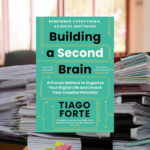I decided to write this article because I’ve seen how often the RACI matrix is undervalued. Through my own experience, I’ve realized how powerful this tool truly is—and how many potential issues you can resolve just by setting clear responsibility boundaries from the very start.
1. What is RACI?
Before we dive deeper, let’s get clear on what the RACI matrix is and how it’s used.
The RACI matrix is a tool that project managers use to clarify roles and responsibilities across tasks and deliverables. It breaks down stakeholder involvement into four categories:
- R = Responsible 🛠️ — The person(s) doing the work
- A = Accountable ✅ — The one who owns the task and signs it off
- C = Consulted 💬 — Experts providing input
- I = Informed 📩 — Those who are kept in the loop
In software development, RACI helps map each major task or deliverable to:
- Who will do the work (Responsible)
- Who must approve or own it (Accountable)
- Who should be consulted (Consulted)
- Who needs to be informed (Informed)
This clarity ensures everyone knows what’s expected of them, streamlining ownership, execution, and communication.
Quick Breakdown:
Responsible (R) – The doers. These folks complete the task—coding, designing, testing, etc. Example: A developer writing and testing code.
Accountable (A) – The task owner. They ensure the work is done right and sign it off. Only one A per task. Example: A project manager overseeing delivery.
Consulted (C) – Experts giving feedback. Two-way communication. Example: A UX designer reviewing a new feature.
Informed (I) – Stakeholders kept updated. One-way communication only. Example: Senior leadership receiving project updates.
2. Why is RACI Important?
Look, as a seasoned PM who has led and overseen numerous projects from initiation to closure, I can tell you with 100% confidence – RACI is one of the key tools you need to ensure your projects run smoothly and to avoid ambiguity in key duties and responsibilities.
💡 If you asked me, “Ana, what are the top 3 reasons for project failure?” I’d say:
- Lack of ownership
- Poor stakeholder involvement and communication
- Lack of planning
Using RACI helps address the first two of those immediately.
Even well-planned projects can hit trouble if roles are unclear. With a RACI in place:
- Decisions are faster ✅
- Effort isn’t duplicated 🔁
- There’s no confusion about ownership 👥
Real-Life Example:
I have personally witnessed escalations from client stakeholders when it wasn’t clear who should:
- Sign off on work
- Facilitate UAT
- Own quality standards
The Business stakeholders may think the project team is responsible, while the project team believes it’s the Business stakeholders’ duty.
Another time, in a programme with five project managers, no one was clear who owned process improvement. Everyone assumed someone else would do it.
You can also face trouble with backlog hygiene—like EPICs or User Stories lingering in “UAT approved” status for months just because no one clarified who should close them. All of this leads to confusion, missed steps, and friction.
RACI prevents all that.
3. What Happens if You Skip RACI?
Without a RACI matrix, you risk:
🚫 Confusion and Delays – Teams waste time figuring out who does what. Business stakeholders and team members may be unsure who should make the decision or who is doing what, resulting in constant status meetings or approval delays.
🚫 Duplicate or Missing Work – Tasks fall through the cracks or are done twice. Without assigned responsibilities, multiple people might unintentionally work on the same thing—or no one works on it at all.
🚫 Lack of Accountability and Conflict – When things go wrong, finger-pointing starts. When something goes wrong and it’s unclear who’s responsible, finger-pointing begins. Decision-making also suffers—if two people think they’re in charge (or neither thinks they are), disagreements and stalemates arise.
🚫 Project Stalls – Without clarity, teams pause to sort out roles instead of moving forward. Project management experts note that many troubled projects share a common issue: no shared understanding of roles and responsibilities. In nearly 100% of project rescue efforts, the absence of explicitly defined roles was a root cause of the project being stuck.
In fact, nearly every project rescue I’ve been part of had one root cause: roles and responsibilities weren’t clearly defined.
4. When Should You Use RACI?
Use RACI early—ideally during the planning or initiation stage. You don’t need it for every task, but use it for key areas like:
- Project governance
- Quality assurance
- UAT ownership
- Cross-team collaborations
- Shared deliverables or handoffs
5. How to Use RACI Effectively
As a practitioner, I’d like to highlight a few key guidelines to get you started. The rest of the theory is already available on the internet.
🎯 Here are a few practical tips:
- Only ONE Accountable (A) per task. No exceptions.
- At least one Responsible (R) per task. Shared Rs are okay if roles are clearly split.
- Be mindful of vertical overload: too many Rs or As for one person could signal burnout risk.
Common Questions:
🤔 Can someone be both R and A?
Yes! Especially in small teams. Just make sure it’s intentional and understood.
🤔 Can someone be both C and I?
Usually not needed. If someone’s Consulted, they’re already informed.
👉 Use the RASCI variation if you want to highlight Support roles in addition to the usual ones (S = support).
✅ Best Practice:
- Review your RACI both horizontally (one A per task and one R per task) and vertically (check individual workload).
- Reserve the I (Informed) for stakeholders who are purely receiving updates.
6. Real-World Examples: When I Used RACI – and How it Helped
Here’s where RACI made a huge difference for me:
📌 Cross-functional alignment: Between PMs, chapter leads (QA, BA, Tech), and Product Managers across backlog preparation and delivery.
📌 RACI for UAT process definition: Our client was responsible for UAT, but it was unclear who facilitated it (calls, timelines, approvals, bug tracking). RACI helped us address hidden ownership gaps and avoid confusion.
📌 Gray areas with business stakeholders: Defining ownership on paper revealed disagreements. Business stakeholders assumed we were doing it, while we thought they were. RACI helped align expectations and build trust.
📌 Data team leadership: When helping a team that already had a lead, I was unsure where my boundaries were. Defining RACI avoided duplication and tension.
📌 QA ownership confusion: I assumed my QA lead understood expectations. He didn’t. I created a RACI outlining his areas of accountability—and it changed everything. He stepped up, felt empowered, and I stopped firefighting.
✅ Final Thoughts
Yes, this was a long read—but I wanted to give you everything you need to start using RACI the right way.
RACI is not just a theoretical tool. It’s practical, powerful, and solves real problems before they happen.
💬 If you found this useful or tried it in your projects, let me know! I’d love to hear how it worked or what more could be added to this guide.







